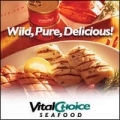 Print This Post
Print This Post
Help – I Have A Paraprosdokian!
Written by Wellness Club on February 24, 2011 – 12:39 pm -A paraprosdokian is a figure of speech in which the latter part of a sentence or phrase is surprising or unexpected in a way that causes the reader or listener to reframe or reinterpret the first part. It is frequently used for humorous or dramatic effect.
Here is a ‘Baker’s Dozen’ of these little turns-of-phrase for your enjoyment:
- I asked God for a bike, but I know God doesn’t work that way. So I stole a bike and asked for forgiveness.
- Do not argue with an idiot. He will drag you down to his level and beat you with experience.
- I want to die peacefully in my sleep, like my grandfather. Not screaming and yelling like the passengers in his car.
- Going to church doesn’t make you a Christian any more than standing in a garage makes you a car.
- The last thing I want to do is hurt you. But it’s still on the list.
- Light travels faster than sound. This is why some people appear bright until you hear them speak.
- If I agreed with you, we’d both be wrong. We never really grow up; we only learn how to act in public.
- War does not determine who is right — only who is left.
- Knowledge is knowing a tomato is a fruit; wisdom is not putting it in a fruit salad.
- The early bird might get the worm, but the second mouse gets the cheese.
- Evening news is where they begin with ‘Good evening,’ and then proceed to tell you why it isn’t.
- To steal ideas from one person is plagiarism. To steal from many is research.
- A bus station is where a bus stops. A train station is where a train stops. My desk is a work station.
Related Posts
 Print This Post
Print This Post

Posted in Funnies | Comments Off on Help – I Have A Paraprosdokian!




































